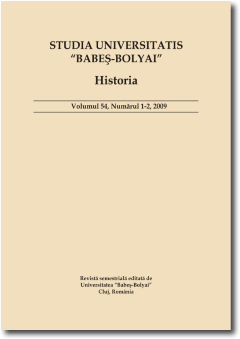REPREZENTAREA ACŢIUNII VIOLENTE ÎN DISCURSUL OFICIAL DIN ROMÂNIA ÎN PERIOADA COMUNISTĂ
THE REPRESENTATION OF VIOLENT ACTION IN ROMANIAN OFFICIAL DISCOURSE DURING THE COMMUNIST REGIME
Author(s): Călin Morar-VulcuSubject(s): History
Published by: Studia Universitatis Babes-Bolyai
Keywords: violence; discourse; class struggle; political community; stalinism; enemy.
Summary/Abstract: In this paper I have two goals: (i) to describe the organization of (violent) actions in the official discourse of communist Romania, trying to show in what way it varied during three stages of Romanian communism: Stalinism, post- Stalinism, and late socialism and (ii) to identify what types of agency it prescribed for the agents of these actions and, consequently, how the political community envisaged in the discourse looked like. My analysis follows two axes: transactivity (Theo van Leeuwen) and congruent – noncongruent representation (Halliday and Matthiessen). In the first period, violence seems to be “in the open”, with relatively clear agents and patients and actions expressed more or less congruently. Now, violence seems to be a form of political mobilisation and activisation, as it is “owned” both by the state and by the society. The following periods witness a progressive tendency towards eliminating agents, endowing with agency “false agents” and expressing action noncongruently. Thus, social action in general (and violence in particular) becomes less conceivable in dynamic terms, as the activity of autonomous agents and more in situational terms, as the effect of an unexplained determinism. Violence (now exclusively state-owned) retreats from the mainstream discourse, but remains an ominous presence in the background. The actors previously enfranchised politically in the discourse of violence are progressively divested of agency.
Journal: Studia Universitatis Babes-Bolyai - Historia
- Issue Year: 55/2010
- Issue No: 1-2
- Page Range: 79-102
- Page Count: 24
- Language: Romanian

